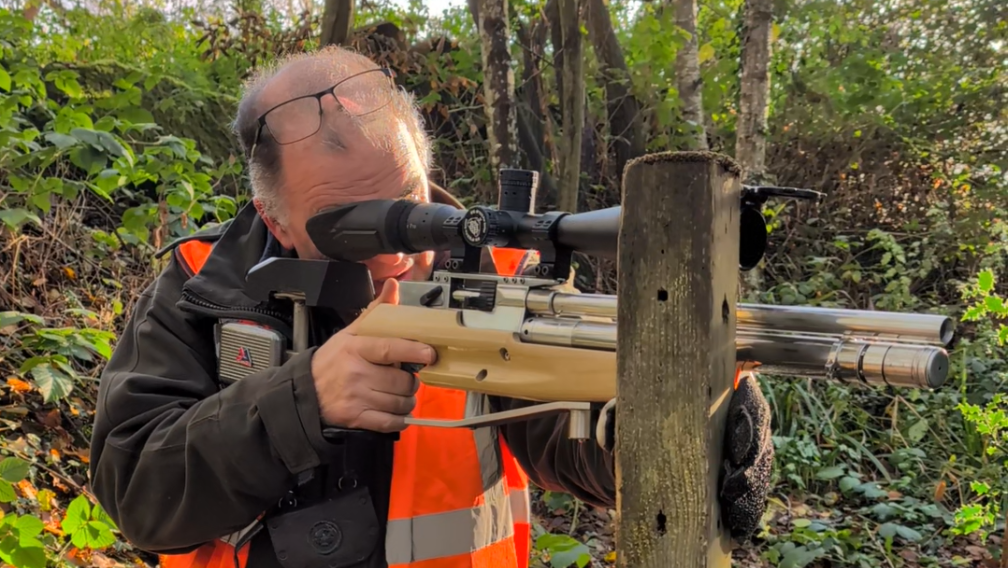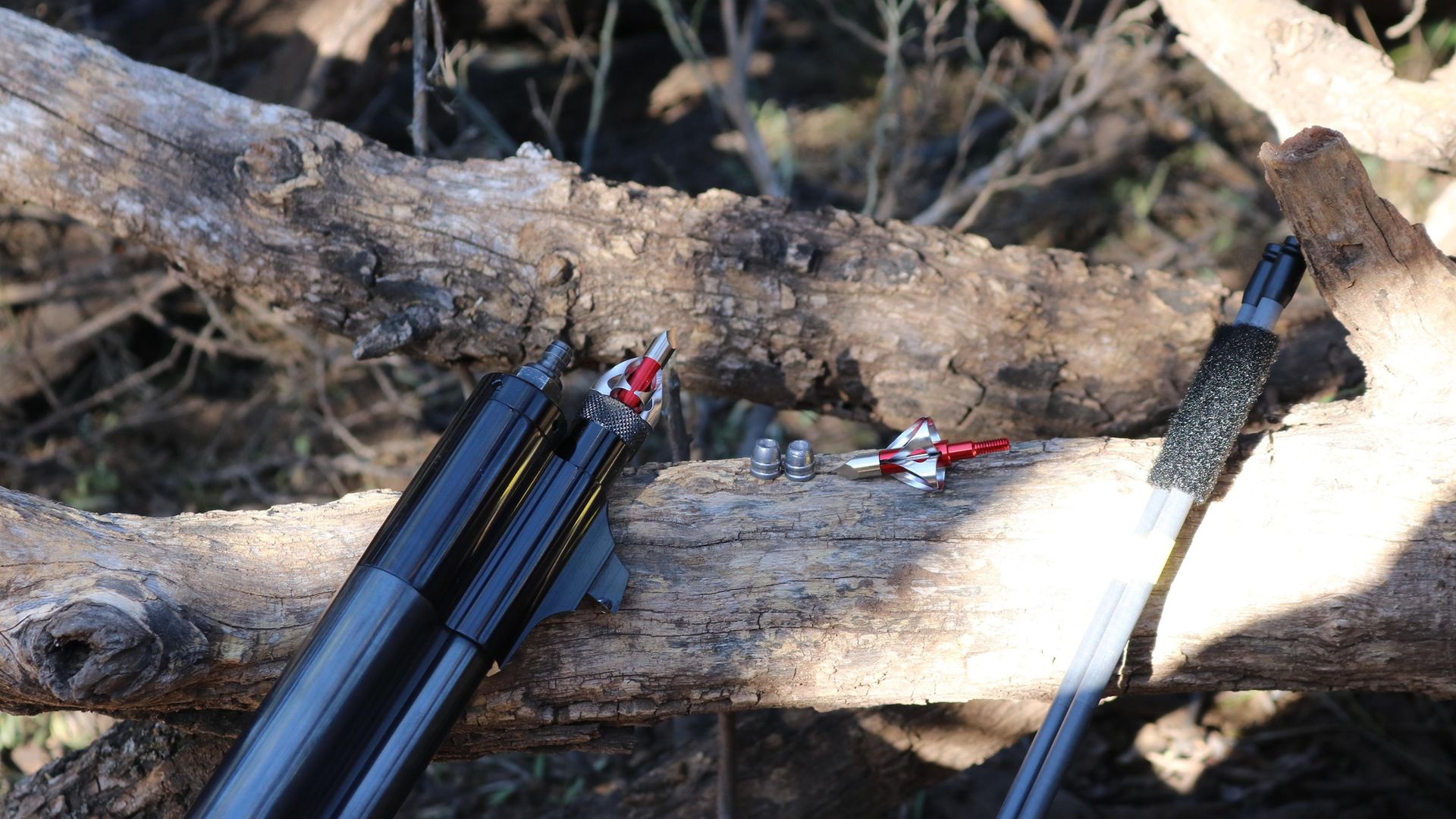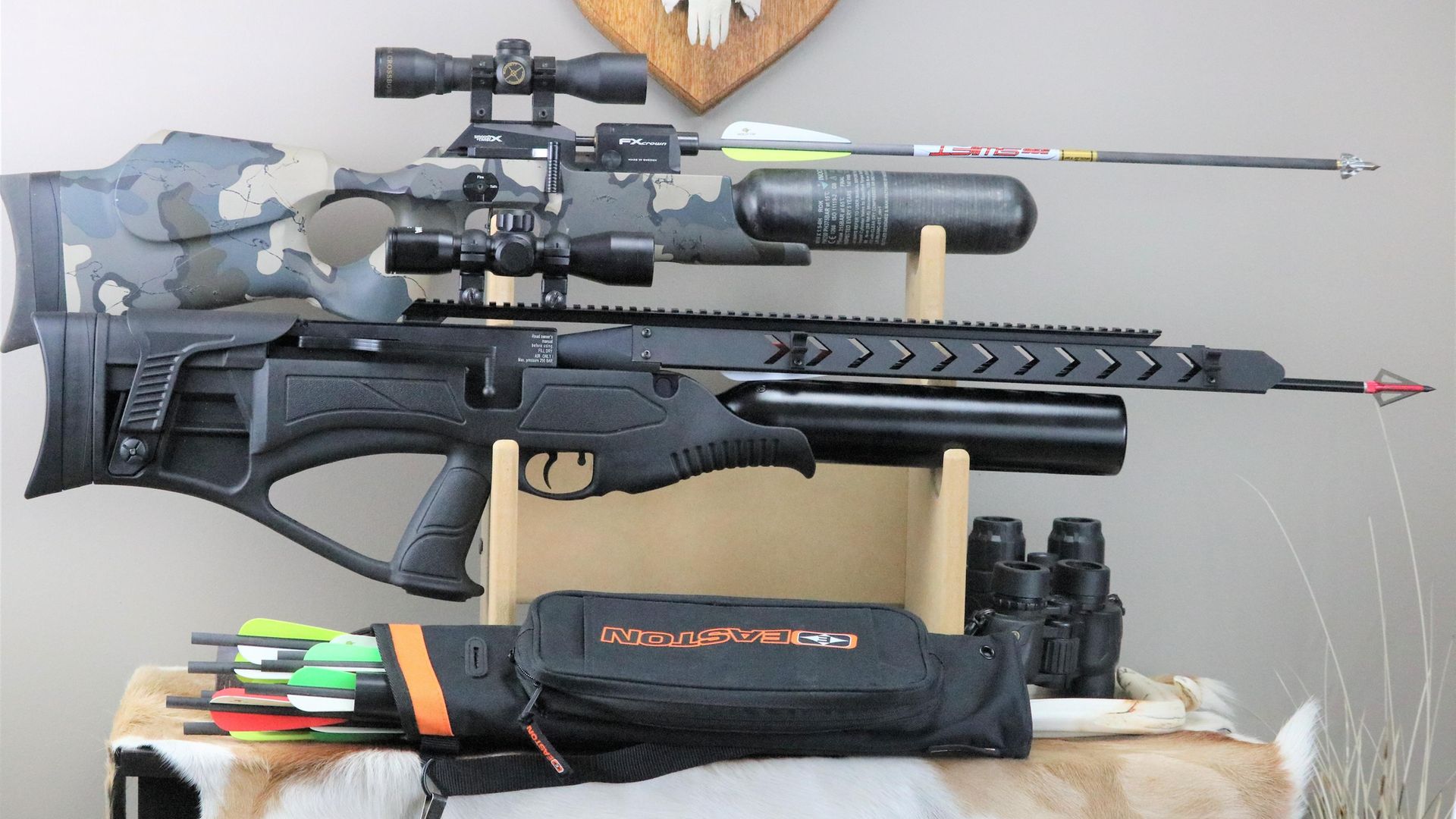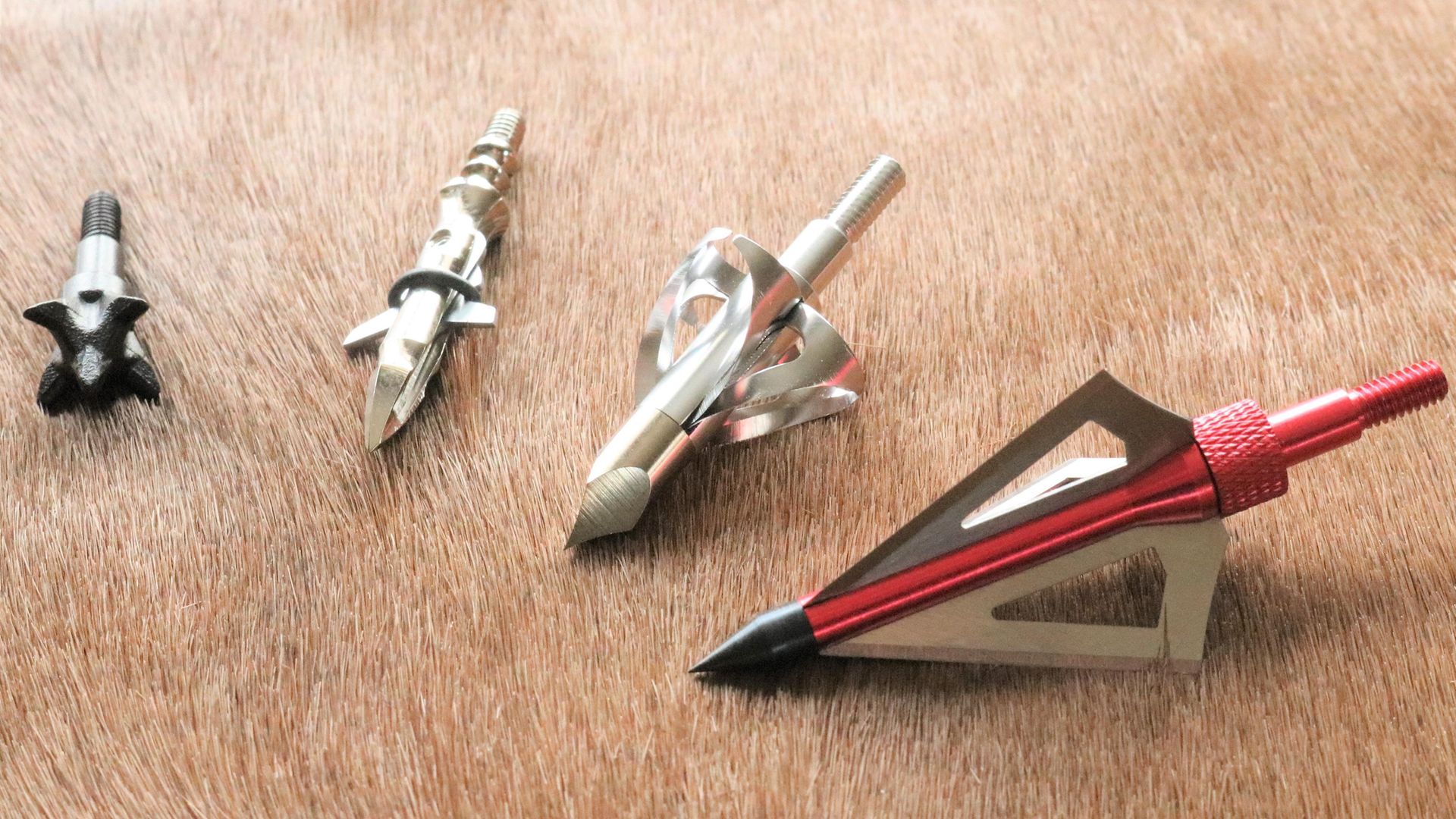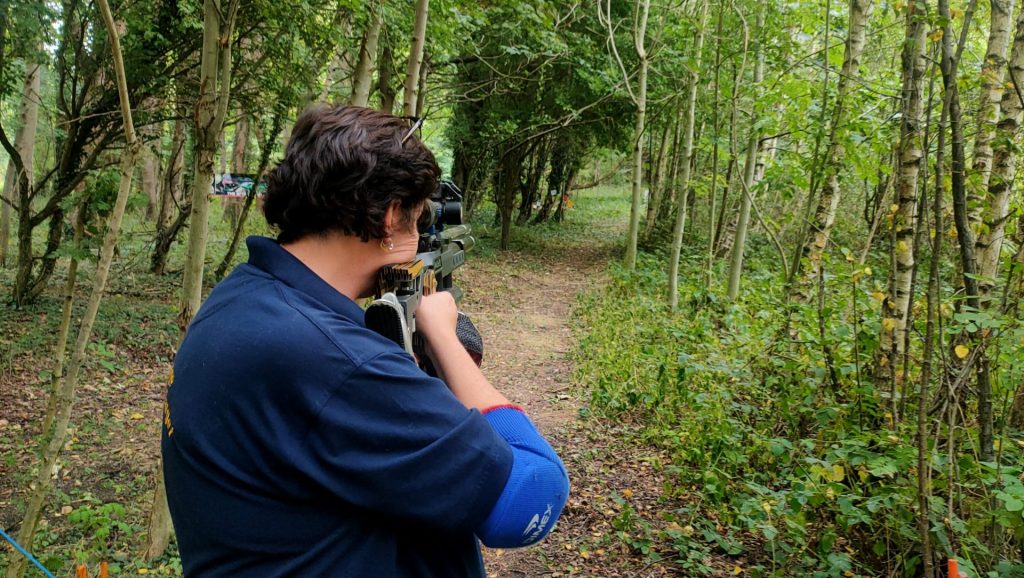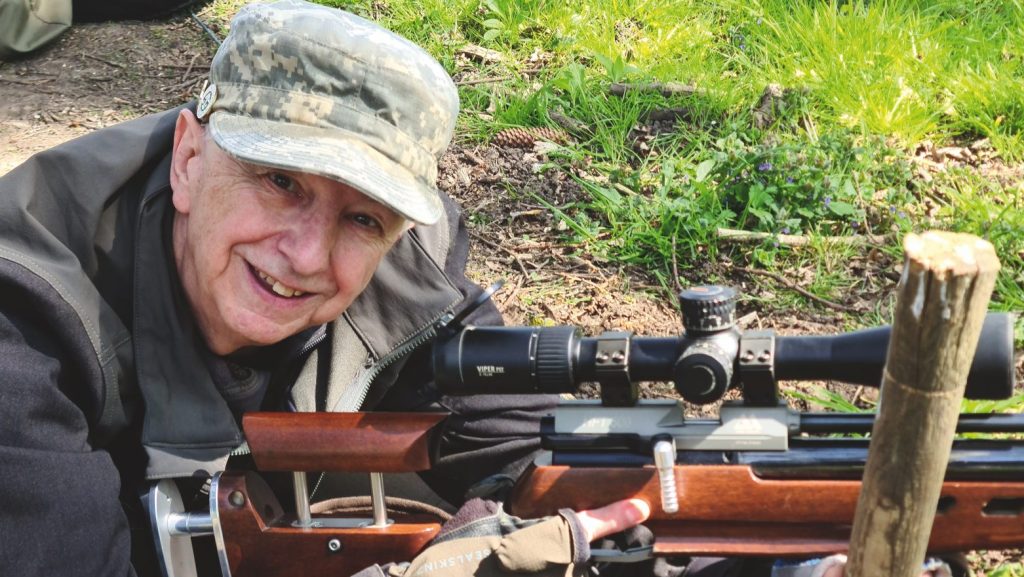Arrow-launching airguns!
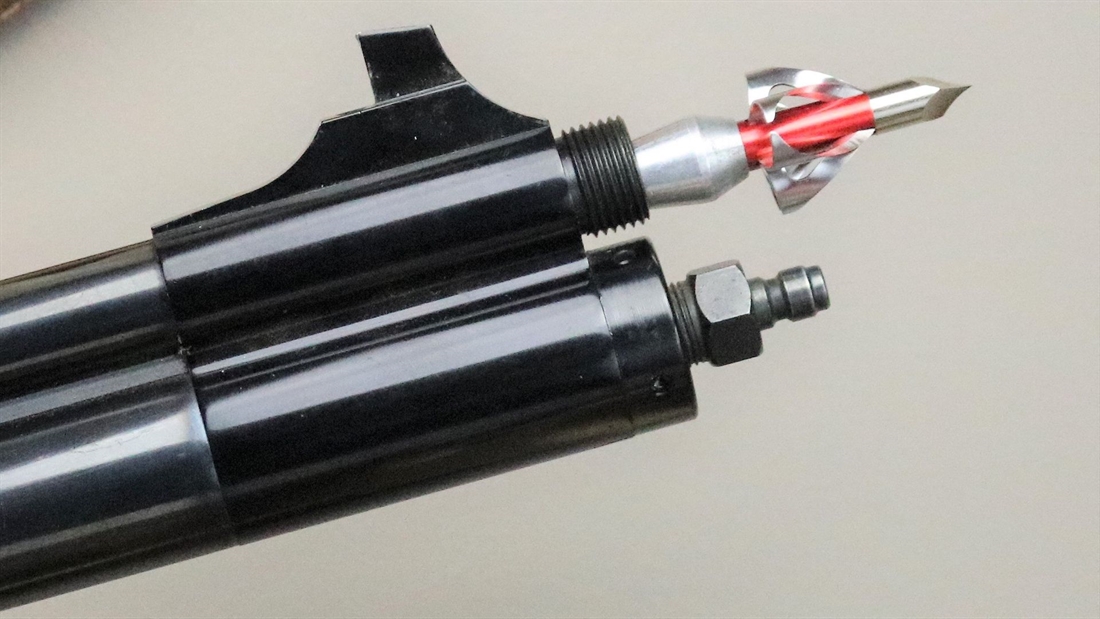
Don’t get too excited – we can’t use them in the UK! Jim Chapman explains how effective these airgun variations are across the pond.
In the past, I’ve mentioned that airguns are becoming more widely accepted as a ‘method of take’ in the States, with new regulations coming into effect every year. Standard calibre (.177-.25) spring-piston and pre-charged pneumatic guns are often used for small game and pest control, with the larger calibre pellet rifles in .25 – .35 gaining acceptance as effective predator guns. There has also been a dramatic increase in the number of .30 – .50 calibre guns (generating over 1000fpe) being used for big game.
In most states where airguns are permitted for big game, there are provisions on the powerplant used – it must be a PCP; calibre – most states have a .30 calibre minimum; and sometimes power – as an example, must generate over 215fpe in Texas. Most, if not all, of the rifles suitable as big-game guns are set up to shoot cast lead bullets, as opposed to the traditional diabolo-style airgun pellet. Cast lead bullets tend to be heavier and have better ballistics and terminal performance compared to diabolo pellets.
More recently, airguns that are designed to shoot a bolt or a standard arrow, have become the subject of growing interest. The first examples of arrow-shooting airguns were custom guns modified from existing PCP air rifles. A few years after these custom arrow guns made an appearance, Crosman came out with their purpose-built Pioneer AirBow. At about the same time, FX Airguns made arrow barrels that could be retro-fitted on their modular PCP rifles. Another important development rolled along after that, the AirBolt from Air Venturi which can be shot from a standard big-bore air rifle.
US TREND
Before going on, I want to state clearly that this article is intended to describe a trend in the US, which has quite different hunting regulations and gun laws. These platforms are based on big-bore airguns – and big bore airguns, launching arrows from them, and hunting with these devices is not legal in the UK. Having made this disclaimer, I’ll present some information on the technology, the advantages and disadvantages of the different approaches, the performance, and the applications of these unique airguns. Over the last several years I’ve taken hogs, deer, and feral goats with the various arrow launching rigs in the States, and several species of plains game in South Africa.
HIGH-PRESSURE AIR
It goes without saying that a PCP is the only airgun power-plant that can generate the volume of high-pressure air needed to propel an arrow at a velocity/energy level matching or exceeding standard archery equipment. Spring-piston rifles – conventional spring or a gas-ram – simply lack the volume of air and the sustained pressure to be effective. I should mention that Umarex released two new arrow airguns at the SHOT Show in 2020; a conventional PCP-powered rifle called the ‘AirSaber’, and I believe the first and only CO2-powered model the ‘AirJavilin’.
There are two approaches to designing an arrow gun; either the arrow slides over a thin custom barrel, like a sleeve, or a specially designed bolt, like a crossbow bolt, is inserted into a standard big-bore airgun barrel. The first and most common method to be used in both custom and production guns was the over-the-barrel method. The second method based on the inside-the-barrel concept, utilises a calibre-matched arrow or bolt launched from a standard big-bore rifle. These bolts may or may not be fletched, depending on calibre.
EVOLUTION OF AN ARROW GUN
The first arrow gun I know of was a modified AirForce Condor rifle. A few years later, Crosman released the Pioneer AirBow. Shortly after the AirBow release, Swedish manufacturer FX Airguns began offering a small diameter replacement barrel that could be retro-fitted to their production airgun models such as the Verminator, and later the Crown and Impact models. This was facilitated by the modular design and adjustable power settings of these guns, which makes swapping the barrel and fill probes for a multi-calibre capability a simple procedure.
This approach was later followed by Air Venturi’s release of the AirBolt, which is a crossbow-like bolt, with a calibre-matched base and tip with a tapped insert for mounting standard broadheads. These arrows were initially released in .50 calibre measuring 23” in length and weighing 430 gr, with a 125-grain broadhead.
The companion platform for use with the AirBolt was the .50-calibre Dragon Claw, designed to shoot cast bullets. This gun was launching a 430 grain Airbolt with broadhead at over 500fps. I used the DragonClaw/AirBolt combo in South Africa to drop a large blue wildebeest at over 60 yards, achieving precision shot placement and complete pass-through. The Airbolts were initially offered in .50 calibre, but there are now .457 and .357 versions available, which can be used in rifles with a 23” barrel.
HIGH VELOCITY
In my experience, all these rifles/projectiles can be accurate and effective, but care must be taken when setting them up to hunt. In general, the AirBolts fired from a standard big-bore airgun are the most powerful and will exceed 600fps in some big bores. My main hunting gun right now is the Hatsan Harpoon arrow gun, which is throwing a 430-grain bolt at about 530fps, and doing so very accurately! Sometimes, it is necessary to dial back the power if the bolt destabilises. This is also dependent on the broadhead being employed.
Both fixed or mechanical broadheads can be used, and I’ve also been using the ‘clover leaf-style’ heads with excellent results. I have experienced occasional problems with mechanical broadheads at very high velocity because they can open in flight and cause the arrow trajectory to become unpredictable. If this occurs, it might be necessary to back off on the power. Regardless of the gun, arrow, and broadhead selected, it is imperative to do thorough testing on the range before hunting with the arrow and broadhead. One must not rely on target results using field tips because the trajectory can be very different.
WHICH IS BEST?
As to the pros and cons when comparing the inside-the-barrel and over-the-barrel platforms: I’ve found inside-the-barrel (AirBolts) generally produce the highest velocity and energy output with good accuracy, and the over-the-barrel rifles tend to be a bit less powerful, but often with outstanding accuracy. The primary advantage of the AirBolt is that you can use them with your current big-bore air rifle.
The over-the-barrel models are easier and quicker to load, but AirBolts can be used in a standard rifle without requiring any special set-up. I’ve taken the Seneca WingShot double-barrel, air-powered shotgun hunting, with one barrel loaded with a .50 calibre roundball in case I came across a coyote, and an AirBolt in the other barrel in case I kicked up a big feral hog.
I do like the fact that modular rifle designs such as the FX Crown, the RTI Prophet, and the Hatsan Hydra can use both standard pellet barrels and an arrow barrel. This means that the shooter doesn’t have to invest in a rifle that can only be used for arrows, or if they already have a rifle can simply order an arrow barrel, providing a very flexible hunting rig. I often travel to hunt, and rather than pack several rifles, will take my FX Crown with .22, .30, and arrow barrels that will cover me on everything from rabbits, to coyote, to hogs with no compromise.
Accuracy is dependent on many variables and requires testing of the individual set-up to determine the maximum distance at which acceptable groups can be obtained. For some of my guns, this is 35 yards and for others it is 60 yards, but for all of them, once that range is established, my expectation is three arrows in a 3” group, using broadheads.
In respect to power generation, this is also dependent on several variables, and many of these guns have adjustable power as well, but all are generating at least 350fps, with some exceeding 600fps. Consider that the most powerful compound bows generate about 340fps and the most powerful crossbows are in the 450fps range, and you’ll appreciate the potential of these arrow guns.
RULES AND REGS
The regulations, as is often the case, vary widely from state to state, so hunters need to look into local regulations. Some jurisdictions allow air-powered arrow guns to be used for deer, hogs, turkey, predators, small game and other big game species, but don’t allow their use during archery seasons. Considering the way traditional archery proponents bickered about crossbows being used in their protected seasons, this will probably be the case with airBows/airBolts, as well, but I use them because I find it a challenging and satisfying method of hunting, and don’t feel the need for a protected season. Hunting with an air-powered arrow rig is ethical, effective, and offers the best of firearm and bow-hunting, in my opinion.

